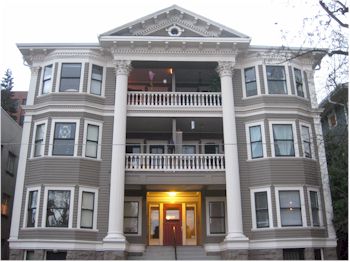Signing a housing lease is a big step into the world of adulthood. A housing lease
is a legal contract between the tenant and the landlord, specifying the responsibilities and rights of both parties involved. The tenant is the person
renting the place to live. The landlord is the owner of the property. Signing a lease can be a bit scary because the individual becomes legally responsible for the rental unit. However, without signing a lease, the renter has decreased legal protection in the event anything should go wrong during the rental period.
Consumers are faced with contracts containing unfamiliar legal terms, and may meet a landlord who says, “It’s OK to sign this contract; it is only a standard form lease.” Consumers should not sign anything until they understand every element of the document! Whenever a consumer signs a housing lease he/she needs to be informed about all of the information which should be stated in the lease.
- A lease should identify the following terms:
- Rent amount;
- Payment procedure;
- Security deposit amount;
- Length of the lease (usually six months or one year);
- Number of people in the rental unit;
- Payment responsibility for all utilities;
- Responsibility for repairs and maintenance;
- Furnishings available;
- If pets are allowed;
- If subleases are allowed;
- Landlord’s access rights to the property.
Items to watch out for in lease agreements include:
- Hanging pictures on the wall;
- Forbidding of overnight guests (can be done by requiring only tenant and immediate family to be occupants);
- Forbidding subleasing;
- Subleasing – the tenant allows someone else to move in and take over the rent payments. The tenant’s name is still on the contract and is still legally responsible for rent and any damages.
- Allowing landlord to cancel the lease without notification;
- Allowing the landlord to hold the tenant liable for the remaining lease balance if one day late with payment;
- Allowing landlord permission to enter the rental unit while tenants are not there;
- Holding the tenant liable for repairs and maintenance.
Make sure the lease is a written document, not an oral agreement. The renter must read everything in the lease before signing it. Keep a copy of the final lease agreement for personal records.
Individual Responsibility:
When using another person’s property, a tenant should treat it as he/she would want people to treat it if he/she owned it. Following this rule will not only help the landlord, but it will also work to the tenant’s benefit in assuring him/her a good credit rating and positive reference when moving elsewhere. It can also help the tenant protect his/her security deposit. In following these basic guidelines, the tenant can create good habits, an excellent reputation, and amiable relationships with other tenants. The impression a person makes on others often shows up
in unexpected places. Portraying a good image as a tenant and an individual
can be beneficial for this reason.
In this lesson, students learn about terms included in housing leases by comparing an example lease agreement to a checklist. Students also discuss individual responsibility as a tenant.

